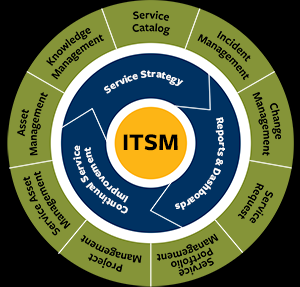Low-Code ITSM Solutions for Speed and Flexibility: Transforming IT Service Management
In today’s fast-paced business world, the need for speed and adaptability in IT Service Management (ITSM) is more pressing than ever. Traditional ITSM system, while robust, can struggle to keep up with the rapid shifts in technology and customer demands. This is where low-code ITSM solutions come in, offering a way to build, customize, and deploy ITSM workflows with minimal coding. Let’s explore how low-code ITSM solutions empower organizations to innovate, respond faster, and remain flexible in a dynamic IT landscape.
What is a Low-Code ITSM Solution?
is a Low-Code ITSM Solution?
A low-code ITSM solution is a platform that enables the development of IT service management applications with little to no hand-coding. These platforms provide pre-built components and templates, allowing IT teams to create and modify workflows, processes, and interfaces quickly. For organizations aiming to reduce the complexities of traditional ITSM systems, low-code platforms offer an alternative that maximizes agility and reduces dependency on specialized coding skills.
Low-code ITSM systems are ideal for teams seeking to implement or enhance IT processes without extensive development resources. By minimizing the need for code, these systems help organizations keep up with demands for faster service delivery, streamlined incident management, and efficient problem resolution.
Benefits of Low-Code ITSM Solutions
Low-code ITSM systems offer multiple advantages, including speed, flexibility, and the ability to meet the unique needs of each organization.
1. Accelerated Time to Market
With low-code platforms, IT departments can deploy new applications or adjust existing ones significantly faster than traditional development methods allow. The platform’s pre-built modules reduce the time needed to create and configure workflows, enabling IT teams to respond rapidly to new challenges or changing business requirements.
In traditional ITSM systems, changes often require weeks or months of development and testing. However, a low-code ITSM solution can shorten this timeline dramatically, making it possible to implement updates in days or even hours. This quick turnaround is essential for businesses looking to maintain a competitive edge by responding swiftly to customer or employee needs.
2. Enhanced Flexibility and Adaptability
Low-code ITSM solutions allow organizations to be agile, making it easier to modify and customize workflows as processes evolve. This flexibility enables IT teams to quickly adapt to changes without needing a complete overhaul of the system. Whether a company needs to change a service request process, create a new incident management workflow, or enhance its knowledge base, a low-code ITSM system can facilitate these adjustments seamlessly.
In addition, low-code platforms are often scalable, supporting both small teams and large enterprises. As companies grow, they can expand their ITSM capabilities, adjusting workflows to meet new demands without losing efficiency.
3. Reduced Dependency on Developers
Traditional ITSM systems often require specialized developers for setup and ongoing maintenance. By contrast, low-code platforms reduce this dependency, enabling non-technical team members to participate in ITSM application development. This shift empowers more employees to contribute to IT service management, reducing the burden on developers and freeing up resources for other strategic initiatives.
Moreover, low-code ITSM systems simplify the process of integrating with other business applications. Most low-code platforms offer drag-and-drop features, templates, and visual design tools that make customization accessible to non-developers, further streamlining workflows and reducing the cost of development.
Key Features of Low-Code ITSM Systems
When selecting a low-code ITSM platform, organizations should look for specific features that can enhance productivity and ensure a high return on investment.
1. Intuitive Interface and Visual Modeling Tools
An effective low-code ITSM solution should have a user-friendly interface, including drag-and-drop tools for building workflows, creating forms, and managing data. Visual modeling tools enable IT teams to map processes quickly and make necessary changes with ease. This ensures that even team members without extensive coding experience can contribute to ITSM system development and maintenance.
2. Automation Capabilities
Automation is critical in IT service management to minimize manual processes and reduce human error. A low-code ITSM solution should include automation features that streamline repetitive tasks like ticket assignment, escalation, and notification management. Automation capabilities reduce the time required for issue resolution, leading to improved service levels and enhanced user satisfaction.
3. Integration with Third-Party Tools
Most organizations rely on a range of software applications, from CRM systems to project management tools. For a low-code ITSM solution to be effective, it must offer robust integration capabilities, enabling seamless communication between the ITSM system and other business-critical applications. This level of integration reduces data silos, enhances visibility, and ensures that all departments can access the information they need.
4. Customizable Dashboards and Reporting
Having real-time insights into IT operations is essential for effective decision-making. Low-code ITSM systems typically come with customizable dashboards and reporting features, enabling teams to monitor key performance indicators (KPIs), track ticket trends, and identify areas for improvement. Customizable reports help managers make data-driven decisions, optimize workflows, and improve overall service quality.

Why Low-Code ITSM is the Future of IT Service Management
The demand for flexible, responsive, and efficient ITSM systems is only expected to grow. As technology continues to advance, companies that rely on traditional ITSM models risk being left behind. Low-code ITSM solutions represent the future by allowing organizations to remain agile, responsive, and efficient, even in the face of rapid change.
By leveraging low-code platforms, companies can build a scalable, user-friendly ITSM system that meets current needs while being adaptable for future growth. This approach not only improves operational efficiency but also boosts employee and customer satisfaction through faster, more responsive service delivery.








